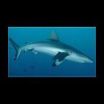Optimizing treatment protocols when diagnostics are costly
2015-04-30
(Press-News.org) HIV-1 continues to spread globally. While neither a cure, nor an effective vaccine are available, recent focus has been put on 'treatment-for-prevention', which is a method by which treatment is used to reduce the contagiousness of an infected person. A study published this week in PLOS Computational Biology challenges current treatment paradigms in the context of 'treatment for prevention' against HIV-1.
Sulav Duwal, Max von Kleist and their collaborators develop and employ optimal control theory to compute and assess diagnostic-guided vs. pro-active treatment strategies in terms of their expected costs, treatment benefit and reduction of onwards transmission.
In the study published this week in PLOS Computational Biology, the authors provide a mathematical platform that can be used to compute optimal diagnostic-guided vs. pro-active treatment strategies under consideration of available resources. They apply this framework to a stochastic model of viral intra-host dynamics and drug resistance development. When applied to resource-constrained settings, they show that pro-active strategies may be worthwhile.
INFORMATION:
Image Caption: Optimal treatment strategies in the context of 'treatment for prevention' against HIV-1. Without medical treatment (upper panel) HIV-1 infected individuals have a high viral titer, which is related to a high probability to infect a sero-discordant partner after sexual contact. In contrast, diagnostic-guided (middle panel) and pro-active treatment switching strategies (lower panel) can durably suppress the virus in an HIV-1 infected individual, thus reducing the probability that the individual spreads the infection.
Image Credit: Sulav Duwal
Image Link: https://www.plos.org/wp-content/uploads/2015/04/von-kleist-30-Apr.jpg
All works published in PLOS Computational Biology are Open Access, which means that all content is immediately and freely available. Use this URL in your coverage to provide readers access to the paper upon publication: http://www.ploscompbiol.org/article/info:doi/10.1371/journal. pcbi.1004200
Contact: Max von Kleist
Address: Freie Universität Berlin
Mathematics and Computer Science
Arnimallee 6
Berlin, Berlin 14195
GERMANY
Phone: 00493083875257
Email: vkleist@zedat.fu-berlin.de
Citation: Duwal S, Winkelmann S, Schütte C, von Kleist M (2015) Optimal Treatment Strategies in the Context of 'Treatment for Prevention' against HIV-1 in Resource-Poor Settings. PLoS Comput Biol 11(4): e1004200. doi:10.1371/journal.pcbi.1004200
Funding: MvK and SD receive funding through the BMBF e:Bio junior research group "Systems Pharmacology & Disease Control", grant number 031A307 and through the DFG-research center MATHEON, project A21 "Modeling, Simulation and Therapy Optimization for Infectious Diseases". MvK receives funding through the Einstein Center for Mathematics Berlin, project CH4: "Optimal control of chemical reaction systems and application to drug resistance mitigating therapy". The funders had no role in study design, data collection and analysis, decision to publish, or preparation of the manuscript.
Competing Interests: The authors have declared that no competing interests exist.
About PLOS Computational Biology
PLOS Computational Biology features works of exceptional significance that further our understanding of living systems at all scales through the application of computational methods. All works published in PLOS Computational Biology are Open Access. All content is immediately available and subject only to the condition that the original authorship and source are properly attributed. Copyright is retained. For more information follow @PLOSCompBiol on Twitter or contact ploscompbiol@plos.org.
About PLOS
PLOS is a nonprofit publisher and advocacy organization founded to accelerate progress in science and medicine by leading a transformation in research communication. For more information, visit http://www.plos.org.
[Attachments] See images for this press release:

ELSE PRESS RELEASES FROM THIS DATE:
2015-04-30
Proteins inside a cell are in constant motion, changing shape continuously in order to carry out their functions. In addition, their multiple component atoms each have individual patterns of motion, making the entire protein a system of non-stop highly complex movement. Understanding how a protein moves is the key to developing drugs that can efficiently interact with it. But because of this complexity, protein motion has been notoriously difficult to study. Scientists at EPFL, IBS-Grenoble, and ENS-Lyon, have developed a new method for studying protein motion by first ...
2015-04-30
The fossil record helps to predict which kinds of animals are more likely to go extinct. When combined with information about hotspots of human impacts and climate-change predictions, Smithsonian scientists and colleagues pinpoint animal groups and geographic areas of highest concern for marine conservation in the May 1 issue of Science magazine.
"Just as some groups of people are more prone to health problems like diabetes or heart disease, we can tell from the fossil record which groups of animals are naturally more likely to go extinct," said Aaron O'Dea, paleontologist ...
2015-04-30
If you thought that a beetle with a machine gun built into its rear end was something that only exists in sci-fi movies, you should talk to Wendy Moore at the University of Arizona.
Many beetles secrete foul-smelling or bad-tasting chemicals from their abdomens to ward off predators, but bombardier beetles take it a step further. When threatened, they combine chemicals in an explosive chemical reaction chamber in their abdomen to simultaneously synthesize, heat and propel their defensive load as a boiling hot spray, complete with "gun smoke." They can even precisely ...
2015-04-30
SEATTLE, Wash. -- More than 1000 dams have been removed across the United States because of safety concerns, sediment buildup, inefficiency or having otherwise outlived usefulness. A paper published today in Science finds that rivers are resilient and respond relatively quickly after a dam is removed.
"The apparent success of dam removal as a means of river restoration is reflected in the increasing number of dams coming down, more than 1,000 in the last 40 years," said lead author of the study Jim O'Connor, geologist with the U.S. Geological Survey. "Rivers quickly erode ...
2015-04-30
CAMBRIDGE, Mass--Bombardier beetles, which exist on every continent except Antarctica, have a pretty easy life. Virtually no other animals prey on them, because of one particularly effective defense mechanism: When disturbed or attacked, the beetles produce an internal chemical explosion in their abdomen and then expel a jet of boiling, irritating liquid toward their attackers.
Researchers had been baffled by the half-inch beetles' ability to produce this noxious spray while avoiding any physical damage. But now that conundrum has been solved, thanks to research by a ...
2015-04-30
The vivid pigmentation of zebras, the massive jaws of sharks, the fight or flight instinct and the diverse beaks of Darwin's finches. These and other remarkable features of the world's vertebrates stem from a small group of powerful cells, called neural crest cells, but little is known about their origin.
Now Northwestern University scientists propose a new model for how neural crest cells, and thus vertebrates, arose more than 500 million years ago.
The researchers report that, unlike other early embryonic cells that have their potential progressively restricted as ...
2015-04-30
ORANGE, Calif. - Researchers in Chapman University's Argyros School of Business and Economics and their collaborators have just published a study on the evolution of yoga in the marketplace. Assistant Professor Gokcen Coskuner-Balli, Ph.D., co-authored the study, which examined how the meaning of yoga transformed in the past three decades. The results show that yoga became decreasingly associated with spirituality and increasingly associated with medicine and fitness. The study argues that the shift in the meanings are due to the changes in how yoga gurus are trained, market ...
2015-04-30
Flowering plants, also known as angiosperms, add an allure to the world that is unlike anything else in nature, but more importantly, they sustain us. Most of the fruits, vegetables, grains, beans, nuts, and even herbs and spices that we consume are produced by flowering plants. They all belong to the green plant branch of the tree of life, and a novel DNA analysis software program named MarkerMiner facilitates identification of genes that can be used to elucidate the evolutionary relationships between them.
University of Florida (UF) biologist Srikar Chamala, working ...
2015-04-30
Over the past 35 years, California's high-wage workers have seen steady increases in their paychecks. But low-wage workers, 4.8 million strong and about one-third of the state's workforce, earned less in inflation-adjusted dollars in 2014 than they did in 1979, according to an analysis from the University of California, Berkeley.
UC Berkeley researchers analyzing U.S. Census Bureau data at the campus's Center for Labor Research and Education found that low-wage workers, defined as those earning hourly wages of $13.63 or less, have seen steady declines in their inflation-adjusted ...
2015-04-30
As the number of bills passed by Congress declines, fewer and fewer Congressional representatives are voting across party lines, leaving only a few key representatives as collaborative voters, according to researchers.
"We can't say for sure that the decline in cooperation is the sole reason that there are fewer bills being introduced or passed by Congress, but we do know the two are statistically correlated, and both have been dropping steadily over the past 60 years," said Clio Andris, lead author and assistant professor of geography at Penn State.
The researchers ...
LAST 30 PRESS RELEASES:
[Press-News.org] Optimizing treatment protocols when diagnostics are costly


